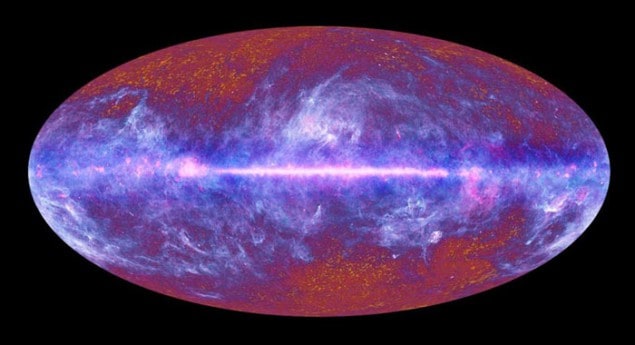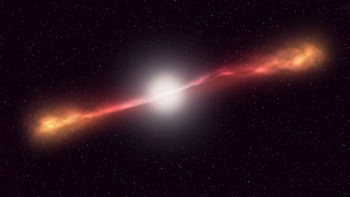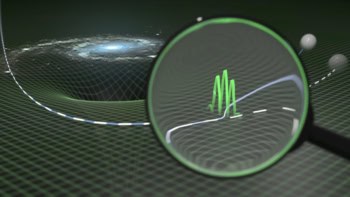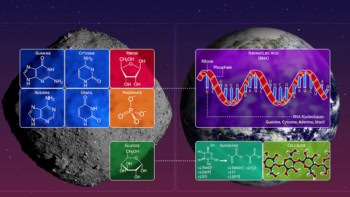
For more than a decade, scientists have been aware that the theory used to explain how the lightest elements are created overestimates the overall amount of lithium-7 in the universe. Now, physicists in the US think the answer to this so-called lithium problem might lie in a hypothetical particle known as the axion – although many are not convinced.
The theory is called Big Bang nucleosynthesis and describes a stage early in the universe’s evolution when, at temperatures of thousands of degrees, protons and neutrons began to assemble into atomic nuclei and form the first light elements: deuterium, along with isotopes of helium and lithium. As temperatures dropped, nucleosynthesis drew to a close, and eventually electrons began to add themselves to the nuclei during a period called recombination. At this time, photons stopped scattering off charged particles and the universe became transparent.
Cosmologists know this because they can detect the cosmic microwave background (CMB), which is a haze of radiation throughout the universe the temperature of which derives from that of the last photon scattering. From fluctuations in the CMB, cosmologists can calculate the ratio of baryons to photons. Baryons include the protons and neutrons that make up everyday matter. It is this baryon-to-photon ratio that predicts the abundances of the first light elements. But for lithium-7, the prediction appears to be some three times higher than the amount observed.
What happened to the lithium?
Several theories have been put forward to explain this lack of lithium, but none has won widespread acceptance. Now, particle physicists Pierre Sikivie and colleagues at the University of Florida in Gainesville think they have a straightforward solution. “What’s nice about our proposal is that we don’t have to assume anything new,” says Sikivie. “We just take the axion, which has long been discussed, and point out some properties that have been overlooked.”
Axions were first proposed in the late 1970s to solve a puzzle in particle physics known as the strong-CP problem, although more recently they have been proposed as candidates for dark matter, which is the mysterious substance thought to make up nearly a quarter of the mass/energy of the universe. If they exist, axions would be very light and interact very weakly with matter – properties that make them difficult to find. Indeed, no experiment on Earth has yet discovered any evidence of axions.
Sikivie and colleagues point out that axions can form a Bose–Einstein condensate (BEC). Such condensates contain particles that have all fallen into their lowest energy state, and are best known to occur in low-density gases at temperatures close to absolute zero. But since the critical temperature for transition to a BEC depends on density, say the Florida researchers, particles can form BECs at higher temperatures as long as they are dense enough. Even in the primordial heat of the Big Bang, the researchers say, axions would easily be dense enough to form a BEC.
Transferring heat
An axion condensate would have a marked effect on Big Bang nucleosynthesis. Passing photons would make waves in it, transferring heat and, ultimately, depleting in number. This means that the baryon-to-photon ratio would increase towards the time of recombination, giving cosmologists today a falsely high impression of the amount of lithium that should have been created.
At least, that is what Sikivie and colleagues think – others are not so sure. Kenneth Nollett of the Argonne National Laboratory in the US points out that, in alleviating the lithium problem, the Florida group’s theory overestimates the amount of deuterium. What is more, the theory requires the effective number of neutrinos – an important value in cosmology – to increase from what has been calculated from the CMB. Whereas observations generally suggest the neutrino number to be between 3 and 4, Sikivie and colleagues expect it to be about 6.8.
“I guess the bottom line for me is that it is important that many possible explanations of the lithium problem are being pursued, but I am sceptical about the [Florida group’s] proposal,” says Nollett.
Sikivie admits the deuterium and neutrino overestimates are potential problems for the theory. Still, he is waiting for results from the European Space Agency’s Planck space observatory, which will provide the most accurate measurement of the effective neutrino number in the next year. “Time will tell,” he says.
The research is published in Physical Review Letters.



